#point cloud to revit
Text
Harnessing the Power of Scan to BIM Technology in the AEC Industry

Scan to BIM services has become a marvel in the AEC industry due to its list of benefits. AEC professionals now easily execute the entire remodeling project with the help of technology without any delays or cost overruns. Moreover, it also helps AEC professionals to remain on the same page, resulting in enhanced communication and collaboration.
#scan to bim#scan to bim services#point cloud to bim#laser scan to 3d model#laser scan to bim#point cloud to bim services#scan to bim modeling#point cloud to revit#scan to bim company#point cloud to revit model#point cloud to bim model#point cloud to 3d model
2 notes
·
View notes
Text
https://www.virtualbuildingstudio.com/convert-point-cloud-data-into-revit-models/
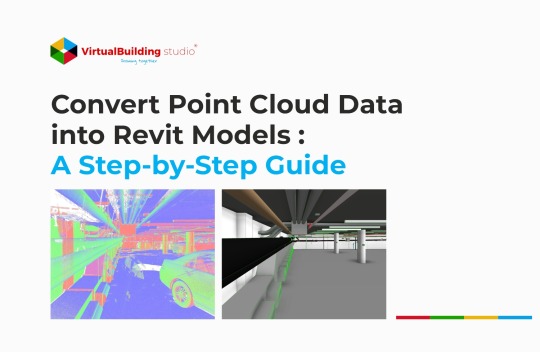
0 notes
Text
Best Laser Scan to Bim Services and Point Cloud to Revit
Introduction:
In the dynamic and ever-evolving field of architecture, engineering, and construction (AEC), the integration of advanced technologies has become synonymous with progress. Among the myriad tools transforming the industry, Laser Scan to BIM (Building Information Modeling) services stand out as a beacon of innovation. This article delves into the realm of Laser Scan to BIM services, unraveling the transformative power they hold in reshaping the traditional approaches to project design and development.
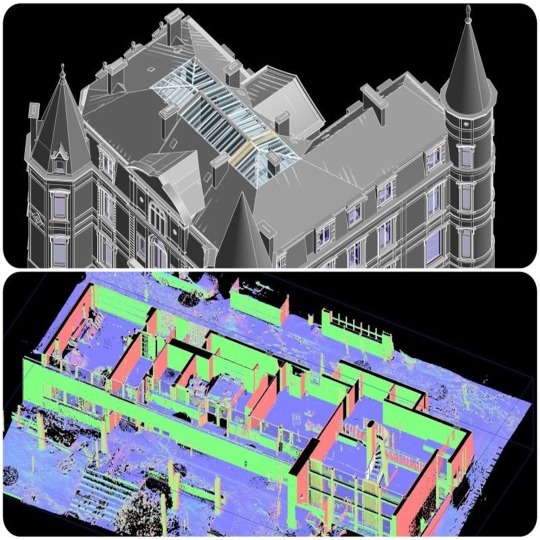
Laying the Foundation: Understanding Laser Scan to BIM Services
Laser scanning technology, with its ability to capture precise and intricate details of physical spaces, has ushered in a new era for the AEC industry. When seamlessly integrated into the BIM framework, these services open up a world of possibilities, allowing professionals to create highly accurate and information-rich 3D models of existing structures.
The Essence of Laser Scan to BIM: Precision and Accuracy
At its core, Laser Scan to BIM services encapsulates the essence of precision and accuracy. Through the use of advanced laser scanners, professionals can capture a wealth of data, including spatial dimensions, surface details, and structural intricacies. This wealth of information serves as the foundation for building comprehensive BIM models, offering a digital counterpart that faithfully mirrors the physical environment.
Efficiency Redefined: Streamlining Workflows with Laser Scan to BIM
One of the key advantages of Laser Scan to BIM services lies in their ability to streamline workflows. Traditional methods of surveying and data collection are often time-consuming and prone to errors. Laser scanning accelerates this process, significantly reducing the time required for data acquisition. The resulting point cloud data is then converted into intelligent BIM models, fostering a more efficient and accurate representation of the project.
Enhancing Collaboration: A Digital Ecosystem for Stakeholders
In the collaborative landscape of AEC projects, communication and understanding among stakeholders are paramount. Laser Scan to BIM services provide a common digital platform where architects, engineers, contractors, and other project collaborators can converge. The detailed and information-rich BIM models become a shared reference point, fostering enhanced collaboration and ensuring that everyone involved is on the same page.
Looking Ahead: Embracing the Future of Design and Construction
As we navigate through the digital age, Laser Scan to BIM services emerge as a catalyst for innovation in design and construction. The ability to transform physical spaces into detailed digital replicas not only elevates the precision of projects but also sets the stage for more sustainable and efficient building practices.
What is Point Cloud to Revit?
Point cloud to Revit encapsulates the intricate process of converting meticulously captured point cloud data, often acquired through advanced technologies like 3D laser scanning, into a detailed Building Information Modeling (BIM) format within the Autodesk Revit environment. The point cloud, a vast collection of spatially defined points in three-dimensional space, serves as a precise representation of existing structures. Revit, renowned for its prowess in BIM, becomes the digital canvas where this transformation takes place. Architects, engineers, and construction professionals import the processed point cloud data into Revit, utilizing it as a reference to craft or refine the BIM model. This synergy facilitates a seamless transition from the physical to the digital realm, allowing for accurate representations of real-world structures and fostering efficiency in design, renovation, and construction projects.
How Does it Work?
The process of integrating point cloud data into Revit involves several key steps, facilitating the translation of real-world physical structures into a detailed digital model within the BIM (Building Information Modeling) environment. Here's a breakdown of how the collaboration between point cloud and Revit typically works:
Data Acquisition:
The process begins with the collection of point cloud data using advanced technologies like 3D laser scanning. These scanners capture precise spatial information by emitting laser beams and measuring the time it takes for the beams to return, creating a dense set of three-dimensional points that represent the surfaces of objects and structures.
Point Cloud Processing:
The acquired point cloud data undergoes processing using specialized software. This step involves cleaning the data, removing noise, and ensuring that the individual scans are accurately aligned and registered to create a coherent and accurate representation of the scanned environment. File Import into Revit, Once the point cloud data is processed, it is imported into Autodesk Revit. Revit supports various point cloud file formats, allowing for seamless integration. Users can import the point cloud into the Revit project, positioning it within the digital workspace.
Point Cloud Visualization:
Within Revit, users can visualize the point cloud data alongside the existing BIM model or as a standalone reference. This aids in understanding the context and spatial relationships between the captured reality and the digital model. The point cloud serves as a guide for modeling within Revit. Architects, engineers, and designers use the spatial information from the point cloud to accurately place elements such as walls, columns, and other components within the digital model. This ensures that the digital representation aligns precisely with the real-world conditions.
Conclusion:
Rvtcad, a specialized company in point cloud to Revit services, begins its client engagement with a thorough consultation to understand project requirements. If clients lack point cloud data, rvtcad guides or facilitates 3D laser scanning to capture precise spatial information. The acquired point cloud undergoes meticulous processing, ensuring accuracy and coherence. Rvtcad's team seamlessly imports the processed data into Autodesk Revit, leveraging it as a reference to create or refine a detailed BIM model. Regular client collaboration and feedback ensure alignment with project goals. The final BIM model is rigorously verified against the point cloud for accuracy. Rvtcad delivers the finalized BIM model, potentially offering post-service support, documentation, and training based on client needs. Through a comprehensive workflow, rvtcad bridges the gap between physical reality and digital precision, enhancing the efficiency and accuracy of design and construction projects.
0 notes
Text
Scan Point Cloud to BIM Conversion Services - CAD Drafting Services
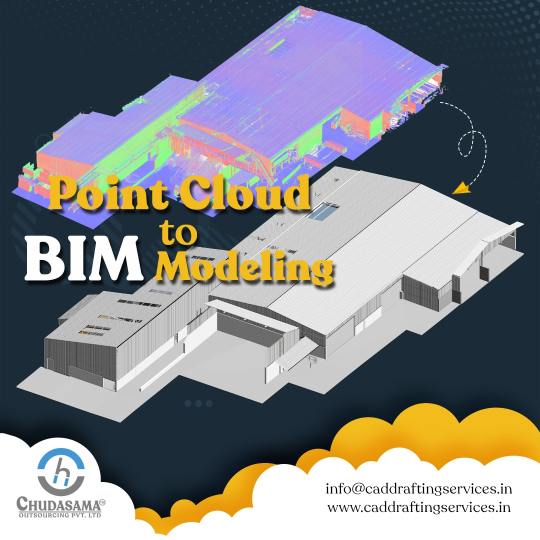
Scan to BIM services are the process of converting point cloud data into a Building Information Model (BIM). BIM is a digital representation of a building that includes all of its physical and functional elements. Chudasma Outsourcing is the best Scan to BIM Conversion company providing architectural services across the country. If you are thinking of outsourcing Point Cloud to BIM Services, you can contact us at [email protected].
For more details. https://caddraftingservices.in/services/point-cloud-to-bim.html
#point cloud to bim#point cloud to bim conversion#point cloud to bim services#bim conversion services#point cloud to 3d model#point cloud modeling#3D laser scan to bim consultants#point cloud to revit#revit modeling services#scan to bim conversion#scan to bim#scan to bim case study#scan to bim services#scan to 3d models#chudasama outsourcing#cad drafting services#COPL
0 notes
Text
Convert Point Cloud Data to 3D Revit Model
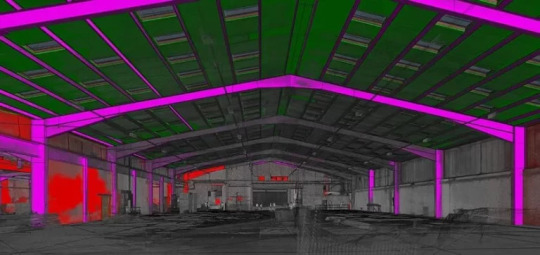
Renovation and restoration of heritage buildings add further challenges to the conversion of point clouds into Revit 3D models. These challenges include inconsistent or missing information, inaccurate interpretation of scanned data of complex geometry, and various other barriers. Point cloud to BIM modeling addresses these challenges. Detailed point clouds for 3D models with the right Revit workflows lead to time and cost savings and enhanced ROI. https://bit.ly/44WSw6y
#point cloud to 3d model#point cloud to bim#3d bim#point cloud to bim services#scan to bim revit#point cloud to bim model
3 notes
·
View notes
Text
What is "Scan to BIM" and advantages of Scan to BIM?
In short, Scan to BIM is a process where we use 3D laser scanners or laser Drone to digitally capture any building or structure and generate point cloud data that can be used to create 3D models, 2D plans by the help of point cloud supported CAD software such as Revit, AutoCAD, Archicad, inventor, rhino, etc and this process also helps to collect project information which can then be used to renovate, refurbish, develop, and maintain the building or site.
If you are from the field of construction, you must be knowledgeable about this term when it is related to the construction of any building, structure, or anything that can play the most important role in Scan to BIM. We'll know the important aspects of the Scan to BIM, and along with understanding what really BIM is, we will also be able to understand how it functions and how it really becomes beneficial in the field of construction.
Advantages of Scan to Bim
The use of technology has been such that even in the field of construction, it has become imperative, and the use of technology in Scan to Bim has been done in a great way so that its benefits may be understood very easily. Let's know some of the benefits of Scan to BIM which help in understanding any structure or building properly.
The first thing that Scan to BIM does is remove any kind of human error which is certainly possible if, in the process of BIM documentation, the traditional method is followed.
Data collection becomes quite easier and it takes very less time in this and that's where Scan to BIM plays a very important role.
Information sharing becomes easier with the process of Scan to BIM and the data which comes out of the process gets released very quickly.
It also becomes easier for teams to get relaxed as they don't have to visit the site again and again and even if they manage to visit once, it will be sufficient to collect the data thoroughly.
The next process is about the inspection after the collection of the data, and inspection can be done off-site in an easy manner. Once the inspection is done, it will not be difficult to devise the perfect plan to take the project ahead.
The process of Scan to BIM gives the assurance of quality and if a particular team goes through a new project or construction, they can use this process to give the project great quality.
Let's understand the procedures of Scan to BIM
The contractors who are from the field of Architecture, Engineering, and Construction (AEC) have to collect the data which is in great accuracy and speed and this happens because the technology of 3D scanning is definitely great. After the collection of the data, it gets placed on a particular tripod with an eye-safe laser which rotates at high speed. Once the laser beam points to a solid surface, the position related to scanning gets recorded in the form of the XYZ axis. These axis points are also known as points and a great number of points are capable enough to create a digital picture which can be called point clouds. After this process, it will be easy to get color images which may definitely give a realistic 3D representation by colorizing the scan. And this becomes important for anybody to know before visiting a particular site in the Scan to BIM process.
Conclusion
The BIM process is such that it is able to include Scan to BIM and considers it as a main component when it comes to construction and building maintenance. If you talk about the growth of the BIM process, it certainly indicates that there is going to be an increase in the accessibility and usability of cloud technology. There is an environment for all stakeholders such as project managers, building teams, designers as well as surveyors who are able to get the benefits at all levels of the project. They also need to make sure that the collaboration takes place at a great level and with full confidence so that the project related to Scan may be accomplished one time. Once the project gets completed on time, it will be a matter of gaining the client's satisfaction.
If you're looking for services related to Scan to BIM, you can definitely contact our platform Rvtcad.com and if you want to get the details, you can feel free to message us anytime.
xxxxxxxxxxxxxxxxxxxxx
2 notes
·
View notes
Text
BIM | MEP Outsourcing Services In India - Cadeosys
Cadeosys is a Leading MEP or BIM outsourcing firm in India and the USA. With expertise in HVAC, plumbing, electrical, Revit, AutoCAD, shop drawings, clash detection, and fire prevention services. Our company offers cost-effective engineering solutions of the best quality.
Website: https://cadeosys.com/
https://cadeosys.us/
Contact : 9037963633
https://www.facebook.com/Cadeosys

#cadeosys#engineeringconsultant#electrical design#architectural outsourcing services in india#Revit BIM SERVICES#MEP Outsourcing Services#Bim Outsourcing Services#electrical design services#Point Cloud Services#3D Rendering#2D drafting services#structural services#Structural BIM Services#cad outsourcing services#design and drafting#plumbing#AECservices#fire fighting
5 notes
·
View notes
Text

Streamlining Your Building Information Modeling Needs
"Revit BIM Services" encompass a comprehensive range of solutions tailored to meet your Building Information Modeling (BIM) requirements using Autodesk Revit software. Our services include BIM modeling, coordination, clash detection, quantity takeoff, and more, designed to optimize your project workflow and enhance collaboration among stakeholders. With our expertise in Revit, we ensure accurate and efficient delivery of BIM services to support your architectural, engineering, and construction projects. Explore our Revit BIM services to unlock the full potential of BIM for your next project.
#3D BIM Modeling Services#3D BIM Modeling#3D BIM Modeling Services New York#3D BIM Modelling Services DC#3D Reality Capture For Building Construction#Reality Capture 3D#Reality Capture Services#Reality Capture Software#Point Cloud To BIM Services#AEC BIM Services#Revit BIM Services
0 notes
Text
Quick Start: Point Cloud to Revit Modeling Guide
The "Point Cloud to Revit Modeling Quick Guide" offers a concise yet comprehensive overview of the process of converting point clouds to 3D models using Revit software. This guide provides step-by-step instructions, tips, and best practices for efficiently importing, processing, and integrating point cloud data into Revit, enabling users to create accurate and high-quality building models for architectural, engineering, and construction projects. Whether you're a beginner or an experienced user, this guide serves as a valuable resource for navigating the complexities of point cloud to Revit modeling effectively.
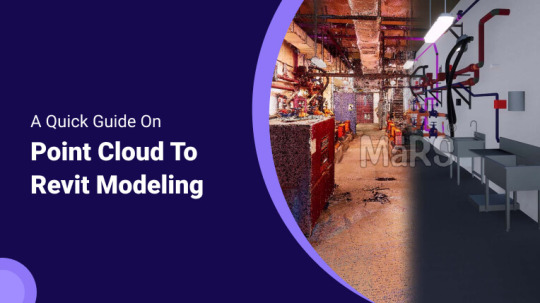
0 notes
Text
Point Cloud to BIM: The Ultimate Guide for AEC Professionals

In the realm of architecture, engineering, and construction (AEC), the adoption of innovative technologies has revolutionized traditional processes. One such advancement is integrating Point Cloud data into Building Information Modeling (BIM) workflows.
Scan to BIM, also known as Point Cloud to Building Information Modeling (BIM) is a process used in the AEC industry to convert point cloud data captured from laser scanners or other reality capture methods into digital BIM models.
This fusion offers unprecedented levels of accuracy, efficiency, and detail, driving significant advancements in project planning, design, and construction phases.
In this comprehensive guide, we delve into the intricacies of Point Cloud to BIM, exploring its definition, Integration, software, application, benefits, challenges, and implementation strategies.
To get more insights - https://prototechsolutions.com/blog/point-cloud-to-bim-the-ultimate-guide-for-aec-professionals/
#point cloud to bim#scan to bim#point cloud#bim#laser scanning#reality capture#architecture#engineering#construction#civil engineering#surveying#drone#virtualreality#lidar#revit#digital twin#technology#mapping
0 notes
Text
Affordable Building Information Modeling (BIM) Services in Oxford, UK

Silicon EC UK Limited is the most trusted and fastest-growing engineering company in the UK which provides Building Information Modeling Services to our clients. It specializes in providing high-quality BIM Drafting Services, BIM Drawing Services, and 3D BIM Modelling structures with the help of BIM Software.
Visit our website :
#bim services#bim consultant#bim design#bim drafting#3d bim modeling services#structural bim services#bim revit#Building Information Modeling Services#Revit BIM Modeling Services#BIM Services#BIM Shop Drawing Services#BIM Clash Detection Services#LOD BIM Service#Revit BIM Family Creation Services#Structural BIM Services#BIM Coordination Services#Point Cloud to BIM Services#BIM 3DModeling Services#Building Information Modeling#Revit BIM Services#BIM Design Services#BIM Consulting Services#bim service providers#BIM Services London#bim service provider#BIM service providers in London#BIM drafting London#bim modelling services#bim services provider#BIM service provider London
0 notes
Text
Digital Construction with the Role of Scan to BIM in Project Management
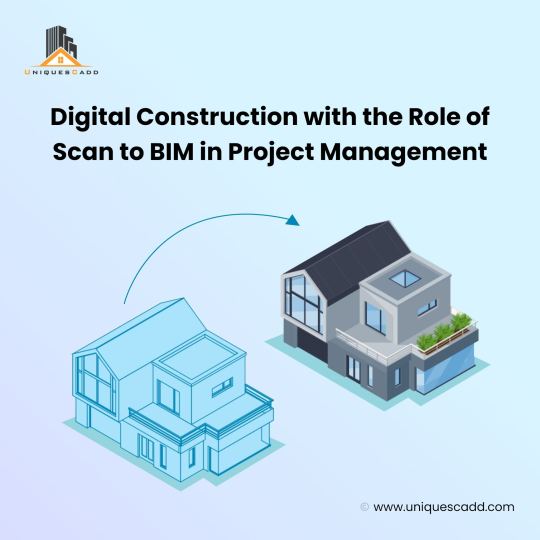
Once the construction phase is completed, maintaining throughout the lifecycle of the building is must. Equipment repairs, potential upgradation or any other remodeling or refurbishment requires accurate data. This enables facility managers to make better informed decisions for existing buildings and maintain them in an accurate manner.
Checkout how scan to BIM plays a vital role in the same.
#scan to bim#scan to bim services#point cloud to bim#laser scan to 3d model#laser scan to bim#point cloud to bim services#scan to bim modeling#point cloud to revit#scan to bim company#point cloud to revit model#point cloud to bim model#point cloud to 3d model
1 note
·
View note
Text
Point Cloud to BIM Services for Land Surveyors
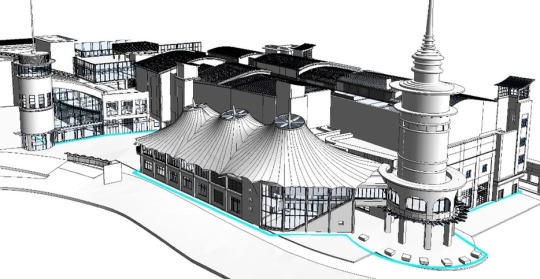
HitechDigital is a leading BIM service provider specializing in Point cloud to BIM services, developing as-built Revit models and CAD drawings. We convert 3D laser scans captured by Matterport, Faro, Leica, Trimble, Truescan, 360 photos etc. (in .rcp, .rcs, .obj, .las etc.) into architectural, structural and MEPF 3D Revit models along with 2D CAD plans.
#laser scan to bim#point cloud conversion#point cloud modeling#point cloud to bim#scan to bim#scan to revit model
0 notes
Text
Point Cloud to Bim, As-Built Drawing Service Rvtcad
Point Cloud to BIM (Building Information Modeling) technology has really changed the game in the construction and architectural industries. This state-of-the-art procedure makes it possible to convert complex point cloud data obtained by photogrammetry or laser scanning into extremely precise and detailed as-built drawings with ease. This essay will examine the importance of Point Cloud to BIM services, including its advantages, difficulties, and practical uses.
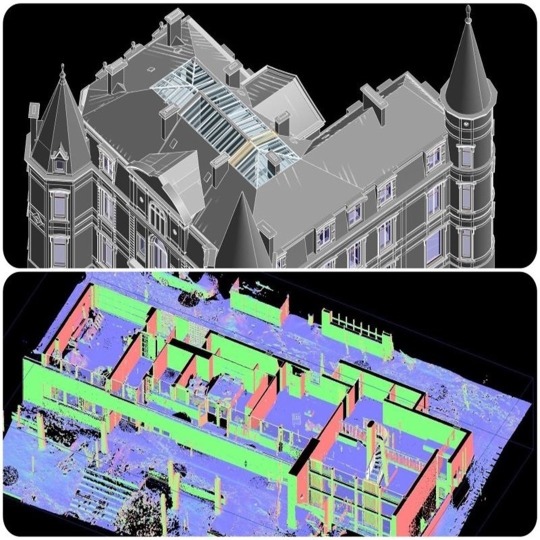
Comprehending Point Cloud To BIM
Allow us to dissect it. An object's outside surface in three dimensions is represented by a collection of data points called a point cloud in a 3D coordinate system. Imagine it as an electronic photograph that records every facet of a structure, such as its measurements, finishes, and structural components.
Alternatively, a digital representation of a building's functional and physical attributes is called Building Information Modeling (BIM). With details on the structure's planning, building, and continuous upkeep, it functions similarly to a virtual twin of the actual building.
In other words, when we discuss converting point cloud data to BIM, we are effectively transforming that in-depth photo of a building into an interactive, dynamic model that can be altered, examined, and used for a variety of objectives.
The Benefits of Point Cloud to BIM Services
1. Precision & Precision: The conversion of Point Cloud to BIM guarantees great precision, capturing minute features of existing structures with little room for error. The accuracy of this information is essential for decision-making by design and construction teams.
2. Efficiency in terms of Time and Money: Conventional techniques for recording and assessing as-built conditions require a lot of work and money. Processes like manual data gathering and interpretation are streamlined by Point Cloud to BIM services, which also save money and time.
3. Improved Collaboration: BIM encourages cooperation amongst different stakeholders, such as facility managers, engineers, contractors, and architects. By offering a shared platform for real-time project data sharing, analysis, and updating Point Cloud integration enhances this cooperation.
4. Clash Detection and Visualization: Early in the project lifecycle, possible conflicts or inconsistencies between design intent and current conditions can be found by superimposing Point Cloud data onto BIM models. This proactive strategy guarantees more seamless project execution and reduces rework.
Challenges and Considerations
Although converting a point cloud to a BIM has many benefits, there are a few issues and things to keep in mind:
1. Complexity of Data Processing: Handling and analysing massive amounts of Point Cloud data calls for powerful computing capabilities and proficiency with data manipulation methods.
2. Interoperability Problems: For data accuracy and consistency, it is crucial to guarantee compatibility and smooth interaction across various software platforms used for Point Cloud processing and BIM modeling.
3. Quality Assurance: To prevent expensive mistakes during the building phase, it is essential to validate the precision and dependability of Point Cloud to BIM conversions.
4. Training and Skill Development: Project teams must continue to train and build their skills to get proficiency in Point Cloud processing and BIM modeling.
Our Point Cloud BIM Services
With the use of Autodesk tools, such as Revit, AutoCAD, Archicad, Sketchup, Inventor, Recap, etc., we have completed 1800+ Scan to BIM Revit and MEP projects. We are experts in Point Cloud to BIM and Scan to BIM modeling services. With +7 years of experience, we have generated accurate 3D BIM models from Point cloud data with LOD100 to LOD500, including highly detailed Revit MEP, for our clients, who are primarily from the construction, architectural, and engineering industries. They use our models for information gathering, refurbishment, renovation, and reconstruction.
Our As-Built Drawings Services
As-built drawings, sometimes referred to as amended drawings or as-builts, are sets of drawings that contractors, architects, and engineers are permitted to submit after a building project is completed. These drawings show the alterations and changes that have already occurred during the construction process since they are an accurate depiction of a finished product.
As far as upcoming advancements and maintenance work are concerned, as-built drawings might be a useful resource. As-built drawings are now regarded as a vital component of project documentation and are beginning to play a significant role in maintaining safety and regulatory compliance, ensuring that the building's code and rules are followed to the letter.
Conclusion:
Point Cloud to BIM services represents a transformative approach to as-built documentation and project management. By RVTCAD power of advanced data capture and modeling techniques, organizations can elevate their efficiency, accuracy, and collaboration throughout the project lifecycle. Embracing this technology-driven paradigm ensures that as-built drawings evolve from static representations to dynamic, information-rich assets driving innovation in the AEC (Architecture, Engineering, and Construction) industry.
#scan to bim#point cloud to bim#bim services#3d laser scanning#as-built drawing#bim laser scanning#scan to revit#scan to cad#as-built drawings#point cloud to cad
0 notes
Text
Best Point Cloud to BIM Conversion Services - CAD Drafting Services

Chudasama Outsourcing is India's best Point Cloud to BIM company providing Scan to BIM services to many construction companies and architectural firms globally. We work on all types of scan formats that are compatible with Revit and CAD software. Our professionals have taken up many such projects of Laser Scan to BIM Conversion. We are known for our quality services and timely delivery. For any such conversion needs, you can contact our experts at [email protected].
#point cloud to bim#point cloud to bim conversion#point cloud to bim services#bim conversion services#point cloud to 3d model#point cloud modeling#3D laser scan to bim consultants#point cloud to revit#revit modeling services#scan to bim conversion#scan to bim#scan to bim case study#scan to bim services#scan to 3d models#chudasama outsourcing#cad drafting services
0 notes
Text
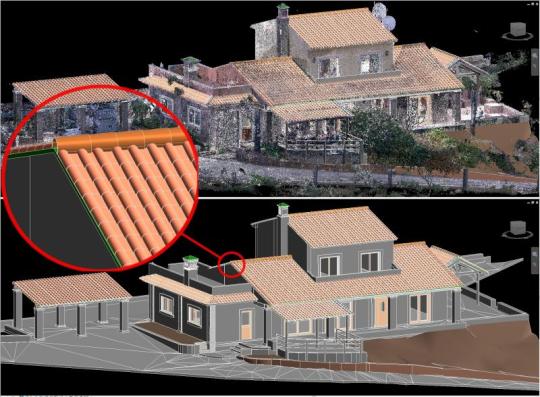
We cover Scan to bim: Conversion of point cloud data to Revit, Cad, 2d, MEP, Oil-gas, Rail tunnels, Industrial-Plant modelling, gothic work, bridges, train stations, commercial buildings, old historical monuments, and Buildings by using AutoCAD, Revit, Recap, Archicad, etc.
0 notes